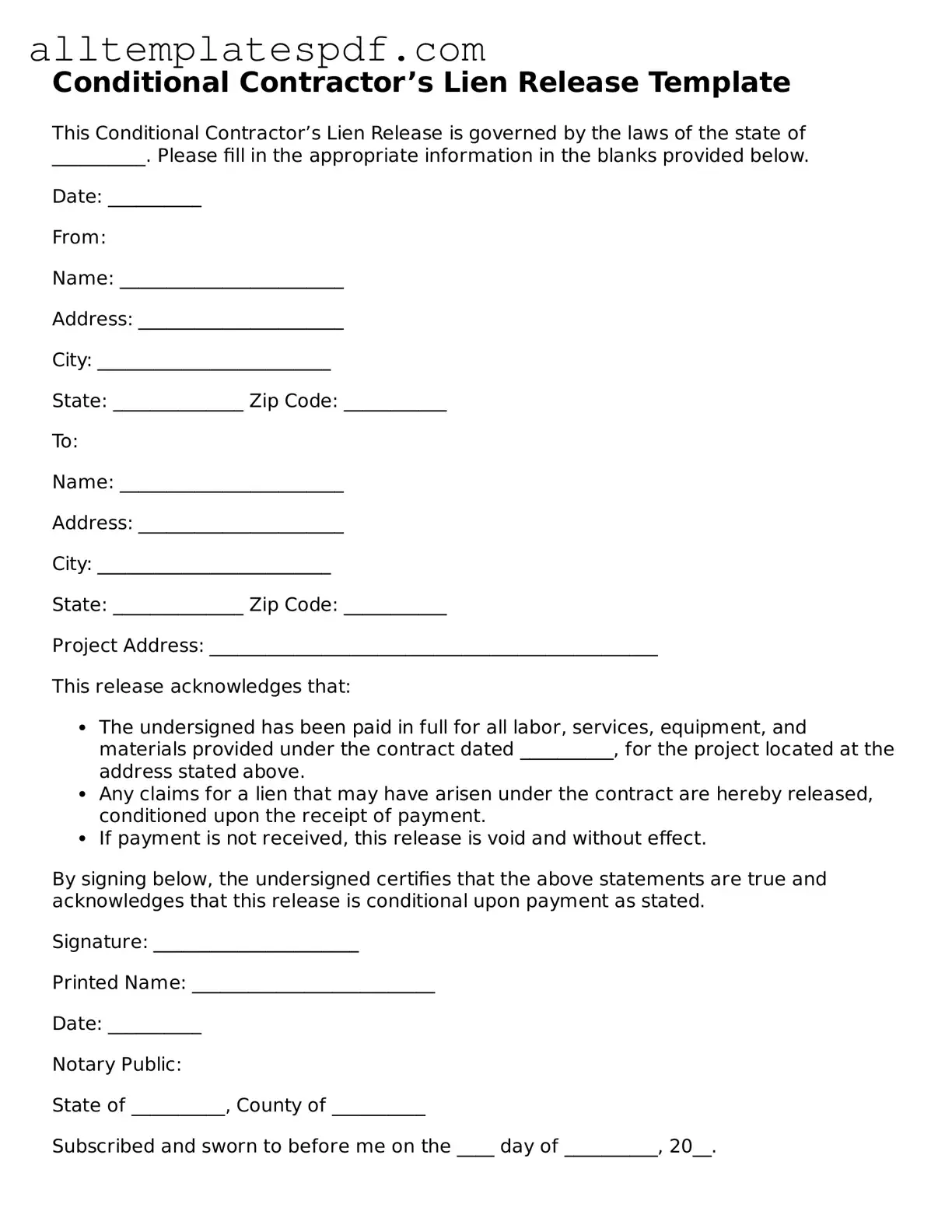Filling out the Conditional Contractor’s Lien Release form can be straightforward, but several common mistakes can lead to complications. One frequent error is failing to include all necessary information. Each section of the form must be completed accurately, including the names of the parties involved, the project address, and the amount being released. Omitting any details can render the form invalid.
Another mistake is not using the correct version of the form. Different states may have specific requirements or variations of the lien release form. Always ensure that the version being used complies with local laws and regulations. Using an outdated or incorrect form can lead to legal issues.
Some individuals neglect to sign the form. A signature is essential to validate the release. Without it, the document lacks authority and may not be recognized by the relevant parties. Additionally, failing to date the form can also cause problems, as the date of release is often crucial in determining the timeline of payments and obligations.
Inaccurate amounts can create confusion. It is vital to double-check the figures entered in the form. If the amount being released does not match the actual payment received, it can lead to disputes. Always verify that the figures align with the payment agreements.
Another common error is not providing a clear description of the work performed. This description should be specific enough to identify the services rendered. A vague or overly broad description may lead to misunderstandings regarding what the release covers.
Some people forget to retain a copy of the completed form for their records. Keeping a copy is essential for future reference and can help resolve any disputes that may arise later. Without a copy, it may be challenging to prove that a lien was released.
Additionally, individuals sometimes fail to deliver the form properly. The release must be submitted to the correct party, whether it is the property owner, lender, or another relevant entity. Not delivering the form as required can result in continued liability.
Finally, overlooking state-specific requirements can lead to mistakes. Some states may have additional stipulations or forms that need to accompany the Conditional Contractor’s Lien Release. Always check local laws to ensure compliance and avoid potential issues.
